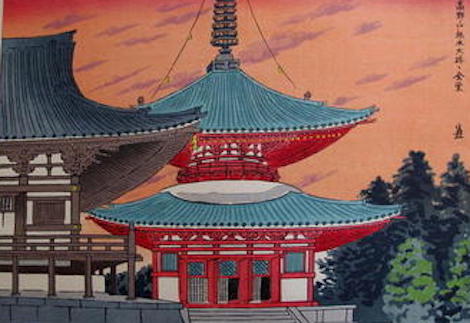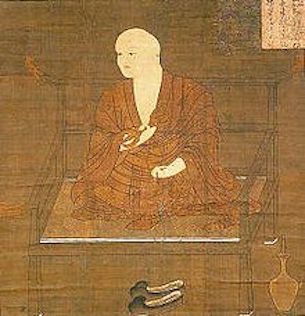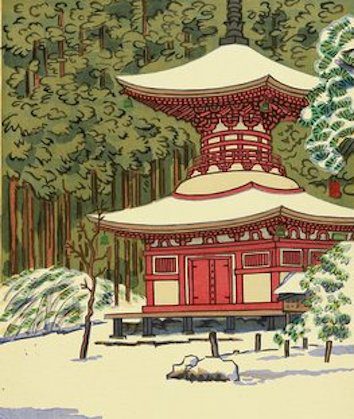Japan art and Buddhism: China, Kukai, and Koyasan
Lee Jay Walker
Modern Tokyo Times

Kukai (774-835), known as Kobo Daishi, established the first monastery in the ninth century on Mount Koya (Koya-san) in Wakayama. The Shingon sect of Buddhism holds a different thought pattern within the many schools of Buddhism in Japan – concerning the teachings of Kukai. Accordingly, Kukai believed that enlightenment could be attained in one lifetime.
He studied Esoteric Buddhism in the Middle Kingdom (China) and fused various ideas before returning to Japan. Initially, Kukai prayed for peace and prosperity. However, he couldn’t find “inner peace” because of the distractions of city life. Therefore, Kukai searched for a remote place where enlightenment, ideas, tranquility, nature, and Buddhism would fuse naturally with the perfect isolated setting.

The BBC reports, “In 816 AD, a monk named Kukai wandered into the thickly forested slopes of Mount Koya (Koya-san) in Japan’s Wakayama Prefecture in hope of finding a suitable site to build a base for his newly founded Shingon sect of Esoteric Buddhism. He chose an 800m-deep valley surrounded by eight peaks, whose ridges resemble the petals of an eight-petaled lotus blossom. Twelve centuries and 117 temples later, Kukai’s spiritual wooded wonderland is a [Unesco World Heritage site].”
China (the Middle Kingdom) impacted Kukai long before he founded the Shingon sect. Accordingly, during his informative years, he studied classical Chinese texts concerning Confucianism and Taoism when a teenager.

The Koyasan website (Shingon Buddhism) says, “The Shingon sect of Buddhism follows the doctrine of esoteric Shingon teachings compiled by Kobo Daishi (Kukai) in the Heian period. “Shingon” refers to the truth revealed by Buddhism. These teachings tell us that words and existence are inseparable, and that the true essence of Buddhism cannot be explained in human language. Instead, the words used in scripture embody the deep meaning and teachings found in phenomena around the world; they are signposts to true reality of all things. Kobo Daishi tells us that it is these esoteric teachings that are truth, and that esoteric Buddhism is the path to understanding them.”
Tomikichiro Tokuriki (1902-1999) created the first art piece. He was born in Kyoto. In the art piece above, Hiratsuka Unichi (1895 and 1997) fuses the Buddhist Pagoda with the harshness of winter. Therefore, both artists provide a glimpse into the religious dimensions of Koyasan.
https://www.koyasan.or.jp/en/shingonshu/ Kukai – Shingon Buddhism

Modern Tokyo News is part of the Modern Tokyo Times group
http://moderntokyotimes.com Modern Tokyo Times – International News and Japan News
http://sawakoart.com – Sawako Utsumi’s website and Modern Tokyo Times artist
https://moderntokyonews.com Modern Tokyo News – Tokyo News and International News
PLEASE JOIN ON TWITTER
https://twitter.com/MTT_News Modern Tokyo Times
PLEASE JOIN ON FACEBOOK